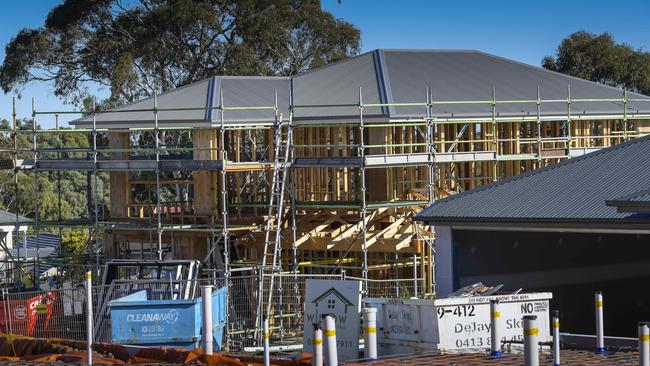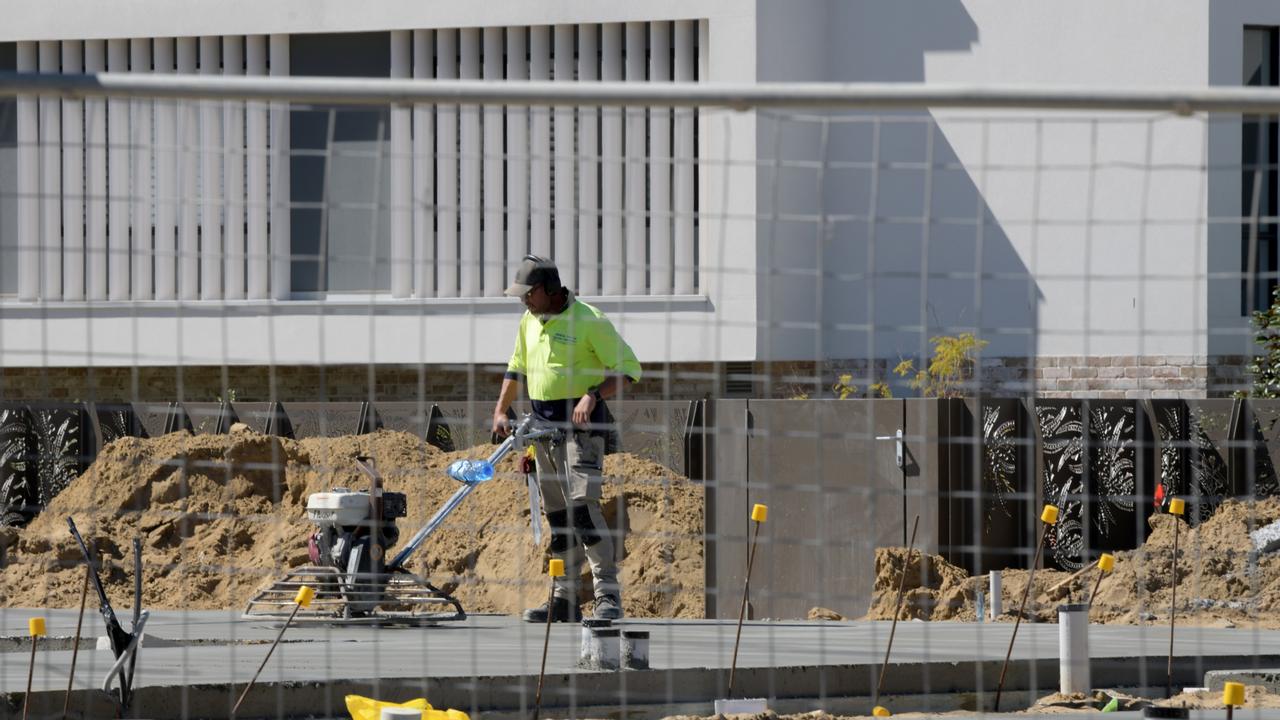Building approvals plunge to lowest in three years
The construction industry has offered a grim warning as surging costs and soaring demand see the sector bear the brunt of business collapses.

Economy
Don't miss out on the headlines from Economy. Followed categories will be added to My News.
Building approvals have slumped to their lowest level in almost three years as soaring interest rates and surging material costs hammer demand for new housing.
In the 2022-23 financial year, building approvals plunged by 18 per cent, with just 176,000 new dwellings approved in the 12 month period. This is the weakest annual results since August 2020, when approvals totalled 175,564 dwellings.
At the same time, Australian construction firms are collapsing in record numbers with insolvencies skyrocketing to their highest levels in a decade.
In the year to June 2023, 2213 businesses in the building and construction sector went into administration, almost doubling from the 12 months to June 2022, according to fresh data released by the Australian Securities and Investments Commission.

The grim news comes amid industry warnings that housing affordability and rental shortages were only set to worsen as new properties were not being built fast enough to keep up with growing demand.
The value of new housing has risen dramatically in the past 12 months. In June 2022 the average value for a new approved house was $409,900. By June 2023, this figure had risen by 12.5 per cent to an average of $461,200.
Chief executive of Master Builders Australia, Denita Wawn, warned that approvals had fallen to “unacceptably low levels”, which would spell further pain for renters and higher house prices.
“We need to go to the root of the problem, getting projects off the ground which are lagging due to a combination of high costs, a declining investment appetite from rising interest rates, and delays in approvals,” she said.
“All levels of government need to make it easier to increase the supply of housing and resist any policies that will exacerbate this problem like the federal government’s proposed industrial relations laws.”

The approvals data follows the publication of a new report by the Australian Construction Association (ACA) which has claimed that bringing productivity growth in the construction industry into line with the rest of the economy would unlock an additional $56 billion in construction capacity every year.
Productivity growth, a measure of how much goods and services are produced with a given set of inputs, such as labour or capital, has been much weaker in the construction industry compared to the broader economy over the last 20 years.
ACA chief executive Jon Davies, said that the benefits of closing the sector’s productivity gap were enormous.
“This would be enough to deliver over 1,000 new schools, 10,000 kilometres of road or 25,000 extra hospital beds with no increase in the workforce,” the report completed by Oxford Economics states.

To drive productivity gains, the ACA cautions against wasteful and duplicative processes, to radically improve the industry’s capability.
“More efficient procurement, standard forms of contract, better approaches to information reliance, and greater use of performance-based specifications would all unlock significant capacity across the industry,” the reports
The ACA also calls for the development of a concerted countrywide approach to productivity reform in the sector through the establishment of a “National Construction Strategy”.
“The Strategy should reflect a shared responsibility between all levels of government, industry and the unions to drive productivity reform.
“The path to a more healthy and productive construction industry needs to be a collaborative one.
“We urge the government, industry and unions to come together and make improving construction productivity a nation-building priority.”
Originally published as Building approvals plunge to lowest in three years


